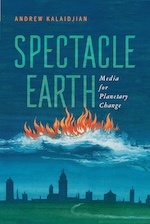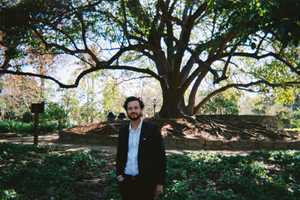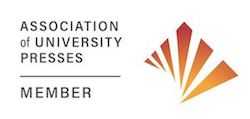Today, we are happy to bring you our conversation with Andrew Kalaidjian, author of Spectacle Earth: Media for Planetary Change
What inspired you to write this book?
The inspiration for this book began about 10 years ago as I was finishing my PhD. The idea was to do an environmental reading of Guy Debord's Society of the Spectacle that could be a sequel of sorts to what would eventually become my first book, Exhausted Ecologies: Modernism and Environmental Recovery. Over the years, Spectacle Earth has grown into a larger consideration of how media helps and hinders engagement with ecological crisis. The technological changes during that time with the rise of artificial intelligence, remote conferencing, the metaverse, and social media made for an exciting challenge for thinking about key themes such as ecology, agency, and virtuality. I am also inspired by the ways in which artists and writers are making use of technology to highlight the existential challenges of living in a highly mediated world.
What did you learn and what are you hoping readers will learn from your book?
I learned that there are a lot of amazing and provocative conversations happening around the environmental challenges and technological changes facing our planet, led by groups such as IKKM, HKW, and ELO. I also learned that contemporary topics have long histories and reoccur through different artistic mediums over time. I hope that readers will gain a better understanding of their own media consumption (no judgment!) as well as the emotional roller coaster of being plugged into an international network of sensationalism.
What surprised you the most in the process of writing your book?
Most surprising was the realization that embracing a number of forces that I thought I was trying to argue against—such as distraction, multitasking, and attention deficit —actually allowed the writing to take off in exciting new ways. Academics are often trained in highly specific and niche analysis, so it was fun to unlearn some of these habits in favor of a more associative and wide-ranging discussion. Getting up from the desk to go see art and talk to people in the real world was always the answer for gathering more material and generating new ideas.
What’s your favorite anecdote from your book?
There are a lot of great moments in this book that mostly come from trying to make sense of my own experiences viewing art, looking through archives, or reading a book. An early encounter with Cranach the Elder's portrait of Cardinal Albrecht that I saw at the Ringling Museum in Sarasota led to an extended meditation on contemplation, the church, the circus, and the pursuit of material oddities. A visit to the Guggenheim Museum in New York to see Christian Nyampeta's Sometimes It Was Beautiful set off a series of connections with archival material from the Imperial Institute that I had viewed at The National Archives in London. The inclusion of AR photos that I took around Los Angeles in the final chapter of the book also helped me break through the often impersonal tone of academic writing. By showing the reader a passage or image that inspired my own thought process, I hope to provide a series of breadcrumbs that help to navigate the otherwise unruly world of content.
What’s next?
I am currently serving as Department Chair of English at California State University, Dominguez Hills. We have a vibrant campus with wonderful students and faculty, and I am doing my best to support our undergraduate and graduate programs in literature, linguistics, TESOL, composition, rhetoric, and creative writing. I am also involved with campus initiatives to promote sustainability and environmental justice in the Los Angeles basin. I am working on a couple of smaller projects, one that considers the relationship between "excess" and "erosion," and one that looks at the history of "Atmospheric Infrastructure," focusing on the journal The Aerologist, published in Chicago from 1925–1936. I am also working on a creative project, called "Notes from the Petroleum Trail," which builds on my poem "Trypophobia".





